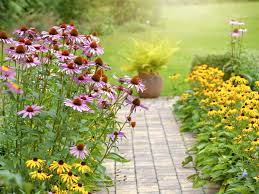Annuals v Perennials. What’s the Difference?

A key factor to consider when deciding what plants to use in your garden is whether they are annuals or perennials. The difference is the length of their life cycle . While annuals complete a full life cycle within one growing season, perennials live for 3 years or more.
Their short life cycle means that annual flowers will try to spread as much seed as possible in one season. They may flower nearly constantly to achieve this, providing stunning, season-long colour to your garden. In contrast, perennials may go in and out of bloom during the season but don’t need to be replaced annually.

Advantages of Annuals.
- Quick growing annual plants can provide instant self-gratification.
- The short life cycle also means you can try different colour combinations in your garden quickly.
- They also mature faster than perennials and are great if you want a lot of breath-taking blooms.
- Annuals typically put all of their energy into developing flowers, and they’ll often continue to bloom all season.
- Annuals, like cucumber and zucchini, may bear fruit repeatedly during one season.

Advantages of Perennials.
- While their blooming period may not be as frequent, their foliage can act as a solid foundation to create a spectacular garden.
- Many perennials require very little attention after being planted. That means they can be left alone while you tend to the rest of the garden, but they may benefit from pruning during autumn.
- Because they are hardy, perennials can be a great drought-resistant choice.
- As they flower throughout the seasons, many perennial flowers are great for cutting.
- Perennials are a great way to attract pollinators to your garden, without needing to be replanted every year like an annual.
For the best results, consider combining both annual and perennial flowers in your garden and planting flowers with staggered bloom times to ensure you have colourful blooms year-round.
